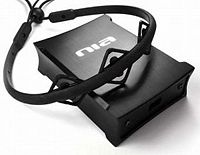Difference between revisions of "HeadsetControlForWheelChair"
From AIRWiki
m |
m |
||
| Line 25: | Line 25: | ||
We have developed two modes of operation: | We have developed two modes of operation: | ||
with a preset destination and a mode of free movements | with a preset destination and a mode of free movements | ||
| + | |||
| + | The thesis work is available in the Discussion page for AIRWiki users, or upon request to the Coordinator. | ||
Revision as of 19:23, 2 April 2010
Headset Control For a Wheelchair
| |
| Short Description: | Study how it would be possible to control a wheelchair with a low-cost headset detecting biosignals such as NIA |
| Coordinator: | AndreaBonarini (andrea.bonarini@polimi.it) |
| Tutor: | MatteoMatteucci (matteo.matteucci@polimi.it) |
| Collaborator: | MatteoMatteucci (matteo.matteucci@polimi.it) |
| Students: | RobertoVandone (roberto.vandone@gmail.com) |
| Research Area: | BioSignal Analysis |
| Research Topic: | Robot development |
| Start: | 2009/09/26 |
| End: | 2009/12/23 |
| Status: | Closed |
| Level: | Bs |
| Type: | Thesis |
The aim of this project is to create a control with a low-cost biosensor for a wheelchair.
To achieve this purpose was used OCZ's NIA [NIA], whose cost is under 100€.
The NIA can detect brain waves (EEG) muscle movements (EMG) and eye movements (EOG).
In this project we have only used the muscular movements, as it is less subject to electromagnetic disturbances and learning easier.
We have developed two modes of operation: with a preset destination and a mode of free movements
The thesis work is available in the Discussion page for AIRWiki users, or upon request to the Coordinator.
